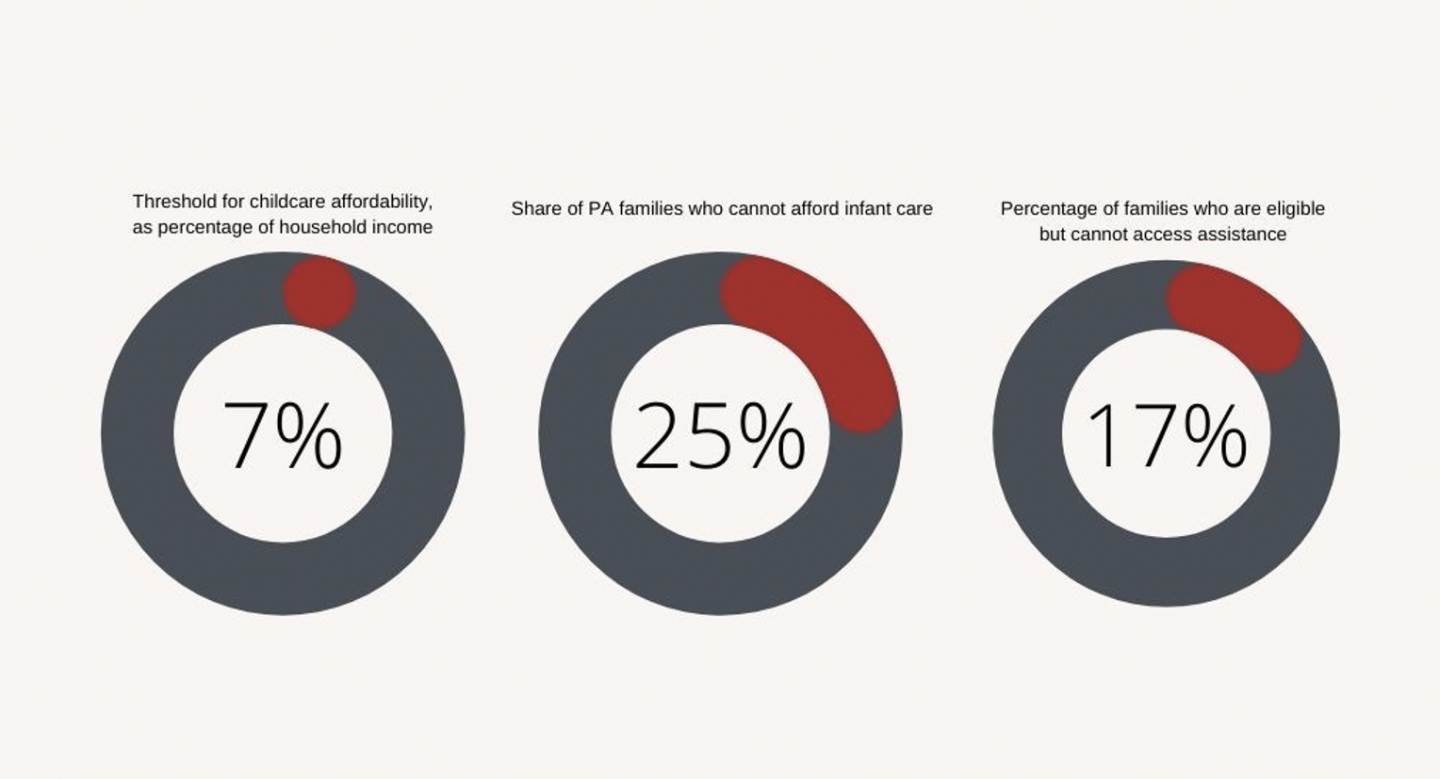Childcare and Economic Development in Pennsylvania
Childcare is vital not only because it allows parents to enter the workforce and support their families. High-quality childcare and early childhood education are also important to the development of tomorrow’s workforce. Anecdotal reports indicate that many people cannot work or are not returning to work amid Covid-19 because childcare is too expensive or unavailable. Parents must consider whether childcare is a worthwhile investment; often, parents fall into a cycle of working in order to afford childcare in order to work, but they cannot get ahead.
In addition to high prices, childcare centers lack available workers. The pandemic has exacerbated this issue. From March to September 2020, 260 child centers in Pennsylvania closed permanently. Wages for remaining childcare workers are often low and employment packages rarely include benefits. As larger businesses raise pay, childcare centers may struggle to compete for workers.
Subsidies have made a positive impact on childcare and employment, but there are still gaps in accessibility. The Child Care Infrastructure Act would fund improvements to facilities, offer a student loan repayment program for educators, and provide benefits to those pursuing childcare credentials. Such policies, which treat childcare as essential infrastructure, could be explored on the local level as well. Opportunities may also be enhanced through the expansion of pre-school and similar programs.
Furthermore, policies and funding to increase wages in the childcare and early education industry will help struggling facilities stay open without raising prices, while building appropriate capacity for care. Programs cannot raise wages from one-time relief funding; instead, they need consistent funding over time, and sectoral wage scales could make this option feasible. A recently proposed scale in Minnesota would start entry-level childcare jobs at approximately $18 per hour, with room to earn similar levels of pay offered to primary teachers. Finally, paid family leave could offer a short-term solution for families. Expanding leave to allow parents to care for newborns longer could help families avoid the high costs of infant care. High-wage workers are likelier than low-wage workers to have paid family leave, so policies that expand its availability will also improve equity.
Read the full policy tracker here.
Findings:
- The U.S. Department of Health and Human Services has set a standard of affordability for childcare of below 7% of household income, but many families spend much more.
- Infant care is particularly expensive, at an average of $11,000 per year – exceeding the cost of public college in many states; in Pennsylvania, over a quarter of families are unable to afford infant care.
- Government subsidies can help with affordability, but they do not reach everyone who needs them and only one of six eligible families actually receives benefits.
Read the full policy tracker here.





